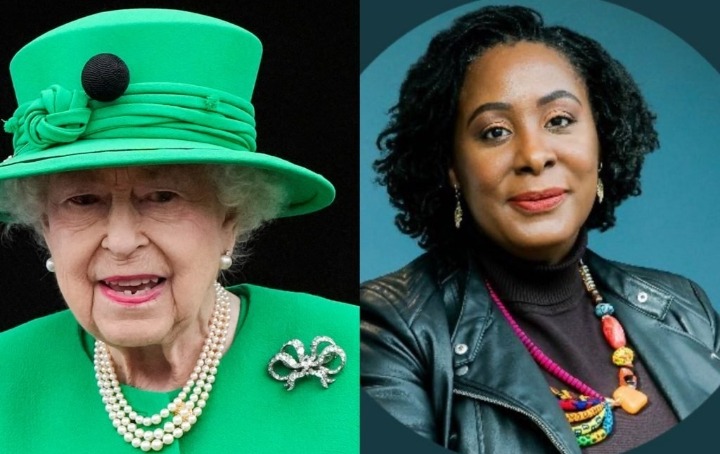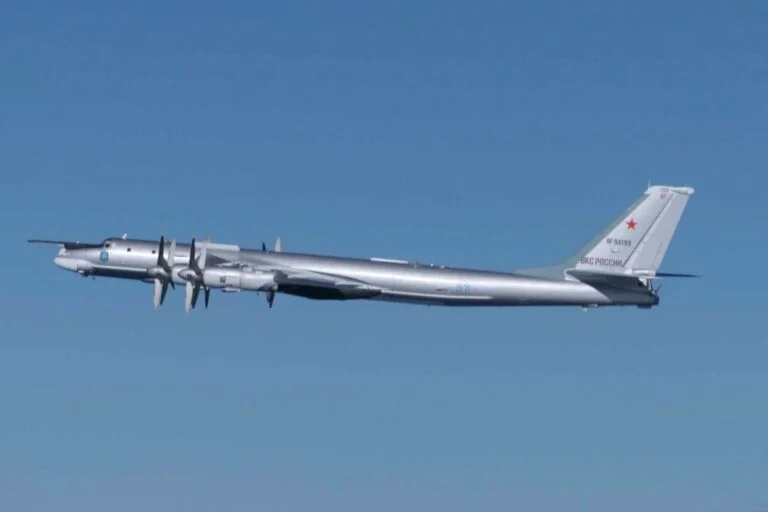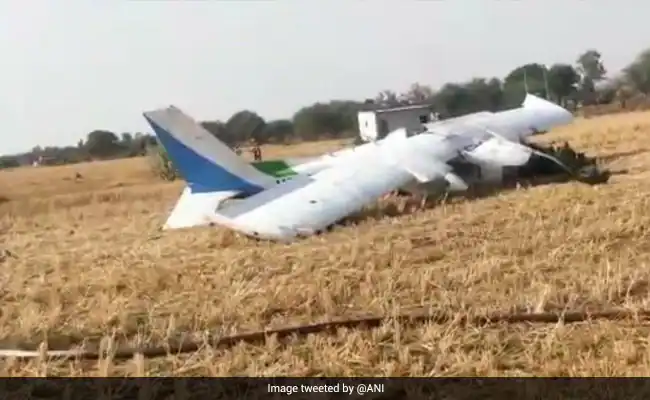Headline
Ohanaeze Defends US-based Prof., Anya Over Comment On Queen Elizabeth

Apex Igbo socio-cultural organization, Ohanaeze Ndigbo has called for understanding over a post by Prof. Uju Anya a few hours before the passing on of the Queen of England, Elizabeth II.
Anya, a Nigerian-born US Professor, had tweeted that she wished the Queen “excruciating pain.”
The tweet, which has long been deleted for being offensive, is generating controversies.
Apart from Carnegie Mellon University in the United States where she teaches, the world’s second richest man, Jeff Bezos has also attacked the tweet.
Bezos wrote: “This is someone who is supposedly working to make the world better? I don’t think so. Wow!”
Bashir Ahmad, an aide to President Muhammadu Buhari, did not also spare her.
“I don’t know that Uju Anya until I saw some of her tweets for the first time on my timeline this evening. Her tweets about the late queen Elizabeth were so unfortunately unnecessary,” Ahmad tweeted.
However, Prof. Anya has also gone further to justify her tweet.
“If anyone expects me to express anything but disdain for the monarch who supervised a government that sponsored the genocide that massacred and displaced half my family and the consequences of which those alive today are still trying to overcome, you can keep wishing upon a star,” she alleged in another tweet.
Reacting to the controversies, the National President of Ohanaeze Ndigbo Youth Council Worldwide, Mazi Okwu Nnabuike urged those attacking the Professor to understand that she spoke with emotions.
“We deeply commiserate with the entire people of Britain on the passage of their Monarch, the Queen of England, just as we congratulate the new monarch, King Charles III,” he said.
Okwu said though Ndigbo do not wish anyone death, “it will be difficult for the people to forget the civil war massacre.”
READ ALSO: Nigerian Professor Under Fire Over Tweets On Queen Elizabeth II
He said, “Anya’s choice of words was one fueled by emotion, similar to that of millions of Ndigbo who are yet to recover from the effects of the civil war and the accompanying genocide.
“It is a known fact that Ndigbo do not wish anyone evil, let alone death, and this is why we are highly forgiving and accommodating.
“But the fact is Ndigbo are yet to recover from the civil war experience, as they still face visible marginalization and exclusion in every segment of the country’s life.
“We, therefore, urge those calling for Prof. Anya’s head to exercise restraint as we join to mourn the departure of the Great Queen Elizabeth II.”
Headline
British Family Accused Of Boarding Dead Grandmother On EasyJet Flight

A British family has been accused of trying to board a dead relative onto an EasyJet flight from Málaga, Spain, to London Gatwick on Thursday, passengers said.
The woman, reportedly 89 years old, was wheeled onto the plane by five family members, who told airline staff she was unwell and had fallen asleep.
Witnesses said the woman was pushed in a wheelchair to the rear of the plane and lifted into her seat. Some claimed they overheard a family member tell a boarding clerk, “It’s OK, she’s just tired,” adding, “It’s OK, we’re doctors.”
READ ALSO:Gunmen Invade Church, Kill Priest’s Wife In Anambra
Just before takeoff, the cabin crew realized the woman had died, and the plane was turned around, delaying the flight by 12 hours.
Petra Boddington, a passenger, said: “easyJet, when did you start letting dead people onto planes? Seriously!” Another, Tracy-Ann Kitching, added: “I saw her being wheeled onto the plane; someone was holding her head as they passed me! A doctor on board confirmed that was already dead when they sat her down.”
EasyJet has denied that a deceased person boarded the plane. The airline said the passenger had a fit-to-fly certificate and was alive when she boarded.
READ ALSO:UK Charges Nigerian-British Art Dealer Ochuko Ojiri With Terrorism-related Offence
“The flight returned to the stand prior to take-off due to a customer on board requiring urgent medical assistance. The flight was met by emergency services, but sadly the customer passed away,” a spokesperson said.
The Guardia Civil in Málaga confirmed officers attended the aircraft, and the woman was declared dead on board. No arrests have been made.
Headline
Russian Strike On Odesa Region Kills Eight, Injures 27

Ukraine’s State Emergency Service has reported at least eight people killed and 27 others injured on Friday night after a Russian ballistic missile strike hit the southern Ukrainian city of Odesa.
According to Ukrainian authorities, the attack targeted port infrastructure facilities in the town of Pivdenne, near Odesa, and damaged nearby civilian vehicles.
The strike came one week after much of Odesa was left without power, heat, and water following a “severe” aerial assault.
“Some of the injured were on a bus that was at the epicenter of the shelling. Trucks caught fire in the parking lot, and cars were also damaged,” the State Emergency Service said.
READ ALSO:Russia Insists Ukraine Must Cede Land Or Face Continued Military Push
Emergency officials said the deaths occurred at a port infrastructure facility. Medical teams and first responders were deployed after the strike, but their work was disrupted by “ongoing air raid alerts,” according to Oleh Kiper, head of Odesa’s regional administration.
Russia has carried out repeated attacks on Odesa in recent days, damaging port facilities, civilian vessels, and key infrastructure.
Two major bridges linking the northern and southern parts of the Odesa region have also been hit, with repairs under way, Kiper said.
Elsewhere, Ukraine’s State Emergency Service reported a “massive” drone attack on the southern Mykolayiv region, which damaged civilian infrastructure and vehicles. No casualties were reported.
READ ALSO:19 Die From Alcohol Poisoning In Russia
Odesa, Ukraine’s largest seaport and a major hub in the Black Sea region, has been a frequent target since the start of the war.
Last week, civilian, energy, and industrial sites in the city suffered extensive damage after what regional officials described as “one of the enemy’s most severe airstrikes,” leaving many areas without power and water.
Russia’s Defence Ministry has not commented on the attack.
Speaking hours before the strike during his annual Direct Line call-in show, Russian President Vladimir Putin said Russia was yet to “see Ukraine’s readiness for peace”.
“[Russia] is ready for negotiations and for ending the conflict via peaceful means,” Putin said, adding that it was up to Russia’s “Western opponents” to end the war.
(CNN)
Headline
Aircraft Crashes In Owerri With Four Persons Onboard

A Cessna 172 aircraft with registration number 5N-ASR, operated by Skypower Express, has crashed at the Sam Mbakwe International Cargo Airport, Owerri, Imo State.
The aircraft had departed Kaduna International Airport en route to Port Harcourt International Airport before diverting to Owerri after the crew declared an emergency.
The crash occurred at about 8:00 pm on the airport premises, with four passengers and crew members onboard.
Confirming the incident, the Director, Public Affairs and Family Assistance of the Nigerian Safety Investigation Bureau (NSIB), Mrs. Bimbo Oladeji, said the agency had been notified of the crash.
READ ALSO:Social Media Feud Spills Into Aircraft As VDM, Mr Jollof Exchange Blows
According to the NSIB, the aircraft crashed on the approach area of Runway 17, but no fatalities have been recorded so far.
The statement said: “Following the occurrence, airport emergency services were successfully activated and arrived on site promptly. Reports indicate that there was no post-crash fire, and the runway remains active for flight operations, with other aircraft taking off safely after the incident.
“Efforts are currently underway to coordinate the recovery and evacuation of the distressed aircraft from the crash site to allow for a detailed wreckage examination.”
The NSIB said it has officially activated its investigation protocols in line with its statutory mandate
READ ALSO:Ogun To Prosecute DJ Over Multiple Road Crashes
The Director-General of NSIB, Capt. Alex Badeh Jr., sympathised with the management of Skypower Express over the incident and expressed relief that no lives were lost.
Badeh Jr. added that the Bureau’s investigation team is already coordinating with relevant authorities to secure the crash site and commence a detailed investigation into the cause of the accident.
Two days ago, 11 persons narrowly escaped death as a private jet crash-landed at Mallam Aminu Kano International Airport, Kano, on Sunday morning.
The occupants, including passengers and cabin crew, were safely evacuated amid an intense atmosphere, eyewitnesses told The Guardian.
READ ALSO:Tanker Crash Kills Three, Fire Razes Shops In Kano
The private jet, owned by Flybird Aviation, crash-landed at about 9:30 a.m. while approaching Kano Airport en route to Abuja.
The incident attracted urgent attention, with emergency staff and other stakeholders converging at the runway to render rescue operations.
The management of the Federal Airports Authority of Nigeria (FAAN) is yet to release an official statement on the incident. Unofficial sources disclosed that the passengers have been taken to an unknown destination.
Several aircraft incidents have occurred at Kano Airport, with several lives lost.
The last incident occurred in May 2002, when an EAS Airline aircraft departed the runway at Aminu Kano International Airport at 1:29 p.m. local time en route to Lagos.

 Metro5 days ago
Metro5 days agoAlleged Organ Harvesting: Bereaved Families Rush To Check Corpses

 News5 days ago
News5 days agoForest Reserve: Okpebholo Broker Peace Between Host Communities, Investors

 News4 days ago
News4 days agoPolice Confirm Edo Tanker Explosion, say No Casualty

 News3 days ago
News3 days agoFormer Delta North senator Peter Nwaoboshi Dies

 News4 days ago
News4 days agoEdo SSG Calls On Media To Support Govt Policies, Assures Better Welfare

 Metro2 days ago
Metro2 days agoJUST IN: Former Edo Information Commissioner Is Dead

 News4 days ago
News4 days agoGrassroots To Global Podium: Edo Sports Commission Marks Enabulele’s First Year In Office

 News4 days ago
News4 days agoOtuaro Tasks Media On Objective Reportage

 News4 days ago
News4 days agoIPF Hosts Media Conference, Seeks Protection For N’Delta Environment

 News4 days ago
News4 days agoOkpebholo Sympathises With Otaru, People of Auchi Over Tragic Tanker Fire Incident




























